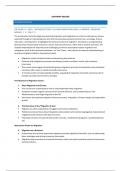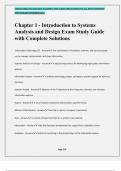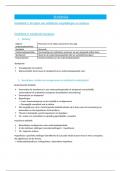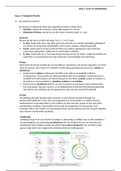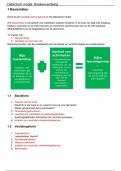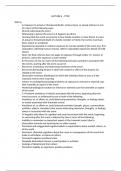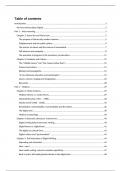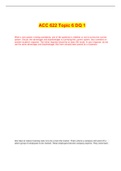COMPUTATIONAL NEUROSCIENCE AND NEURO-INFORMATICS: stand
SYNAPSE DIVERSITY SYSTEMATIC ANALYSIS OF SYNAPTIC DIVERSITY (WINNOK)
lot of diversity of synapses: EXPANSION MICROSCOPY
> place: anatomical location & neuronal QUANTIFICATION OF OBJECT-BASED METHODS advantageous technique: expands sample
contact SYNAPSES: CO-LOCALIZATION (generates more distances)
> speed: electrical (via gap junctions) need segmentation
= set a threshold which defines fore- & back- → bcs of that you liberate more iso-
& chemical (via R) topes = better staining
> type: ionotropic (channels) & metabo- INTENSITY-BASED METHODS ground
tropic (GPCR) Pearson correlation coefficient !!!!! → disadvantage: look only at co-
> action: excitatory, inhibitory & = how good do 2 images correlates with localizations, not single synapse info
modulatory each other → how can we grow further from co-
> R: NT-identity = +1 = perfect correlation localization?
> proteome: intratype molecular = 0 = no correlation
diversity enhance specificity by exploiting
> advantages: proximity (nabijheid):
USE OF FLUO MICROSCOPY • tells us how strong correlation is → use AB to visualize proteins
TO IMAGE SYNAPES between 2 signals that interact: fluo AB -> become
• completely independent from back- fluo when they bid
fluo microscopy based on light (wave/
particle) ground, bcs you subtract it in formula
→ when light meets a new medium, it > disadvantage:
• sensitive to noise, bleed-through &
HOW TO DOCUMENT SYNAPTIC
will always spread out
= diffraction non-colocalizing pixels DIVERSITY
→ can look at this in 2D & 3D: • only 1 value for an image problem: can use max. 4 makers in fluo
> 2D: central disk with → simple solution for this: Mander’s microscopy: to many = to much overlap
concentric rings around it coefficient → solve this with cyclic staining:
= diffraction pattern a) stain
> 3D: baseball shape (goes also MANDERS COEFFICIENT b) image under microscope
in Z-axis) for formula you need to decide at what c) bleach & elute
point the intensity is there (at which d) repeat
problem: synapses are small (30µm) point red=red & green=green)
→ fluo microscope doesn’t have = 1 = perfect colocalization of pixels
HOW TO INTERROGATE INTRA-
resolution (200nm) to image this channel A with pixels in channel B SYNAPTIC ORGANISAITON
→ need to make use of this limitation = 0 = no colocalization we can not see a synapse with fluo
& make it an advantage microscopy, let alone see individual proteins
> advantage: easy to interpret & → there are superresolution techniques that
separable give so much detail: STED & STORM
> disadvantage: sensitive to noise & (pointillism)
background → makes use of photo activated fluoro-
phores to reveal synaptic architecture
, RATIONALE & PIPELINE OF WHOLE BRAIN IMAGING WITH CELLULAR RESOLUTION (WINNOK) OBJECT DETECTION &
WHOLE BRAIN MICROSCOPY QUANTIFICATION
example from this is Google Maps based
concept BLOB DETECTION USING
WHOLE BRAIN → kijk stadje op hoge afstand: Google Maps
MICROSCOPY PIPELINE IN gaat downscalen: weinig detail, maar je look at position in frequency domain: will LAPLACIAN OPERATOR
A NUTSHELL ziet nog steeds vaag de straten liggen tell you how strong a specific frequency eg. we want to count amyloid beta blobs
→ inzoomen: Maps gaat upscalen -> details↑ contributes to image in B
→ centre frequency domain = 0 → issue: background signal that
for Google Maps based technology need → further you go away the finer the fluctuates in intensity
pyramidal image structure in which you have grating, the finer frequencies → want to segment (determine what
a) whole brain microscopy with light- all the down sampled parts contribute to image is fore- & background)
sheet microscopy → very efficient way to work with high → not easy
→ gives raw images resolution images → to help process we can look
b) process raw images with destriping for blobs & enhance them:
& stitching to 3D image use filters
c) resizing to correct size
d) map to predefined atlas blob is gaussian structure, if you want to
e) quantifying fluorescence detect there are specific filters that
allow you do derivates of blob
puts detection & lighting perpendicular → they look for change in intensity
to each other: FREQUENCY DOMAIN between pixels
-> right/top: detection eg. derivative of Gaussian
-> left: lighting -> light is flattened to
PROCESSING eg. Laplacian of Gaussian = takes
a sheet & then we can cover whole = bandpass filter approach: only allow Laplacian of gaussian which is the
sample certain frequencies to pass (others smoothing form of the signal
-> central: sample blocked)
INTERPRETATION FOURIER ROBUST BLOB DETECTION
FREQUENCY DOMAIN TRANSFORM advantages: many operation tedious (saai) problem Laplacian: the larger, the worse
IMAGE PROCESSING any image can be re-written as a weighted & time consuming it’s response will become
sum of harmonics (sines & cosines) with ≠ → when using frequency domain you → actual signal will be very weak
reduce 2D problem to 1D problem → need robust blob detection: if
WHOLE BRAIN MICROSC. frequencies, amplitudes & phases
→ easier to work with + don’t lose
= Fourier expansion/transformation you tune Laplacian to object u
PRODUCES BIG DATA → long story short: image = sum sines & info want to see you will detet
1 image = big data (1 terabyte) cosines
→ need to down sample: resolution↓ → can convert any image into Fourier
o/w we can’t navigate through it transformed space where spatial
→ but nowadays there are coordinates are converted into some
technologies that keep resolution kind of an expression of frequencies
with simple computer at certain positions with certain
intensity -> but how interpret?

